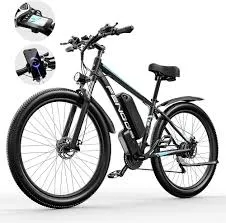10 月 . 11, 2024 17:34 Back to list
how to fix a gear shifter on a mountain bike
How to Fix a Gear Shifter on a Mountain Bike
Mountain biking is an exhilarating experience that combines speed and adventure, but it can quickly turn into a frustrating ordeal if your gear shifter is malfunctioning. A well-functioning gear shifter is crucial for smooth gear changes, allowing you to tackle various terrains with ease. Here’s a step-by-step guide on how to fix a gear shifter on your mountain bike.
Understanding the Gear Shifter
Before diving into repairs, it’s essential to understand the components involved in the gear shifting system. The two main parts are the shifter itself (usually located on the handlebars) and the derailleur, which is responsible for moving the chain between gears on the cassette. Familiarizing yourself with these components will make the troubleshooting process more manageable.
Tools You Will Need
Before you start fixing your gear shifter, gather the necessary tools - A multi-tool or a 5mm Allen wrench - Screwdriver (Philips and flat-head) - Lubricant (bike-specific lubricant is best) - Clean cloth - A bike stand or a way to lift your bike for inspection
Step 1 Inspect the Shifter and Cables
Begin by visually inspecting the shifter and cables. Look for signs of wear and tear, frayed cables, or any obstructions that could be causing issues. If the cables are damaged, you’ll need to replace them. In many cases, a simple cleaning can make a significant difference.
1. Check the Cable Tension Squeeze the shifter and observe any response from the derailleur. If the derailleur doesn’t move, the cable might be too slack or too tight. 2. Clean the Cables Use a clean cloth to wipe down the cables and shifter. If you notice any dirt or grime, consider applying lubricant to ensure smooth movement.
how to fix a gear shifter on a mountain bike

Step 2 Adjust the Derailleur
If the shifter seems functional but isn't shifting gears correctly, adjustments are likely needed at the derailleur.
1. Locate the Limit Screws On the derailleur, you will find two limit screws marked ‘H’ (high) and ‘L’ (low). These determine how far the derailleur can move. If the derailleur is not shifting into certain gears, adjust these screws slightly until it aligns correctly with the cogs. 2. Tension Adjustment If your gear shifter is not engaging correctly, you may need to adjust the cable tension. This can typically be done by turning the barrel adjuster (located at the derailleur or on the shifter) clockwise to increase tension or counterclockwise to decrease it.
Step 3 Test Gear Shifting
After making adjustments, it’s time to test the shifter. Shift through all gears while pedaling to ensure each shift is smooth and responsive. If a gear fails to engage or skips, revisit your adjustments, as often a small tweak can solve the problem.
Step 4 Replace Components if Necessary
If, after all adjustments, the shifter still doesn’t function correctly, you may need to replace components. Common parts to consider include - Shifter If the internal mechanisms of the shifter are damaged, it may need replacement. - Derailleur A broken or misaligned derailleur might not respond adequately. Replacing it can often restore proper function. - Cables and Housing Frayed cables can lead to ineffective shifting. Upgrading to new cables and housing ensures safe and smooth gear changes.
Conclusion
Fixing a gear shifter on a mountain bike may seem daunting, but with a little patience and the right tools, it can often be done at home. Regular maintenance will also help prevent future issues, keeping your bike riding smoothly on all terrains. If you find yourself stuck at any point, don’t hesitate to consult a local bike shop. Happy riding!
-
The Main Application Scenarios of Mountain Bike
NewsOct.29,2024
-
Suggestions for Selecting and Maintaining Mountain Bike
NewsOct.29,2024
-
Characteristics of Kids Balance Bike
NewsOct.29,2024
-
Characteristics of Baby Stroller
NewsOct.29,2024
-
Characteristics and Advantages of Mountain Bike
NewsOct.29,2024
-
Baby Stroller Purchasing Suggestions
NewsOct.29,2024
-
Suggestions for Purchasing Kids Balance Bike
NewsOct.09,2024

